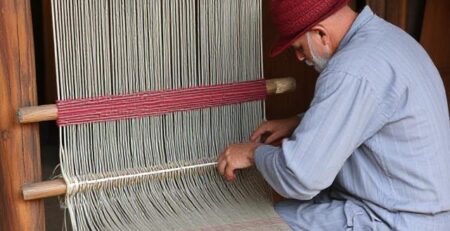Khapli Wheat vs Normal Wheat: Which is Better for Indian Health & Diets?
Introduction
Wheat is a staple in Indian diets, but not all wheat is created equal. Khapli wheat (Emmer wheat)—an ancient grain—is making a comeback as a healthier alternative to modern hybrid wheat (normal wheat). But how do they differ? And how does switching to Khapli wheat impact Indian households?
This blog explores:
✔ Nutritional differences (Protein, fiber, gluten content)
✔ Health benefits & risks (Diabetes, digestion, weight loss)
✔ Taste & cooking differences (Roti, bread, and traditional dishes)
✔ Price & availability in India (Is it affordable for the masses?)
✔ Impact on Indian food habits (Why more people are switching)
1. What is Khapli Wheat?
The Ancient Grain Making a Comeback
- Also called Emmer wheat or Samba wheat.
- One of the oldest cultivated wheat varieties (used in India for centuries).
- Unhybridized, unlike modern wheat (which is crossbred for higher yield).
Normal Wheat (Modern Hybrid Wheat)
- Commonly used in atta, maida, and packaged foods.
- Genetically modified for higher gluten & yield (e.g., Sharbati, Lokwan varieties)
2. Nutritional Comparison: Khapli vs Normal Wheat
| Nutrient (per 100g) | Khapli Wheat | Normal Wheat |
|---|---|---|
| Protein | 14-16g | 10-12g |
| Fiber | 10-12g | 2-4g |
| Gluten | Low (Soft gluten) | High (Hard gluten) |
| Glycemic Index (GI) | 40-50 (Low) | 70-80 (High) |
| Minerals | Rich in Zinc, Iron | Lower in nutrients |
Why This Matters?
✔ Khapli wheat digests slower → Better for diabetics.
✔ Higher fiber → Improves gut health, reduces bloating.
✔ Lower gluten → Easier on digestion (good for mild gluten sensitivity)
3. Health Benefits: Why Are Indians Switching?
1. Better for Diabetes & Weight Loss
- Low GI → Controls blood sugar spikes.
- High fiber → Keeps you full longer, aids weight loss.
2. Easier Digestion (Less Bloating & Acidity)
- Softer gluten → Reduces IBS & gluten intolerance issues.
- Traditional milling → No chemical processing.
3. Boosts Immunity & Heart Health
- Rich in antioxidants, zinc, and iron → Fights inflammation.
- Lowers bad cholesterol → Good for heart patients.
4. Safe for Kids & Elderly
- No pesticides (grown organically).
- Gentler on stomachs (less gas, constipation)
4. Taste & Cooking Differences
Khapli Wheat
- Texture: Slightly coarse, nutty flavor.
- Best for: Rotis, parathas, porridge.
- Drawback: Dough is less stretchy (harder for fluffy bread).
Normal Wheat
- Texture: Soft, neutral taste.
- Best for: Bread, cakes, biscuits.
- Drawback: High gluten can cause bloating.
Verdict: Khapli wheat is better for daily rotis, while normal wheat works for bakery items
5. Price & Availability in India
Khapli Wheat
- Cost: ₹80-120/kg (2x costlier than normal wheat).
- Where to buy? Organic stores, Amazon, BigBasket.
- Popular brands: ProNature, 24 Mantra, Organic Tattva.
Normal Wheat
- Cost: ₹30-50/kg (cheaper, widely available).
- Where to buy? Local kirana stores, supermarkets.
Is Khapli Wheat Affordable for the Masses?
- Not yet—but demand is rising among health-conscious urban Indians.
- Government push? Some states promote Khapli farming (e.g., Maharashtra, Karnataka).
6. Impact on Indian Food Habits
Changing Trends in Indian Kitchens
✔ Urban Shift: More families buying Khapli for diabetes & weight management.
✔ Rural Demand: Farmers returning to traditional grains (healthier & sustainable).
✔ Restaurants & Bakeries: Some cafes now offer Khapli rotis, cookies.
Challenges
❌ Higher cost limits poor households.
❌ Less soft texture—takes time to adjust.
❌ Limited production (only 5% of India’s wheat cultivation).
7. Final Verdict: Should You Switch?
Who Should Choose Khapli Wheat?
✅ Diabetics & pre-diabetics
✅ Weight watchers
✅ Gluten-sensitive people
✅ Families prioritizing long-term health
Who Can Stick to Normal Wheat?
✅ Budget-conscious households
✅ Those without digestive issues
✅ People who eat wheat occasionally
Try Khapli wheat today—your gut will thank you!












